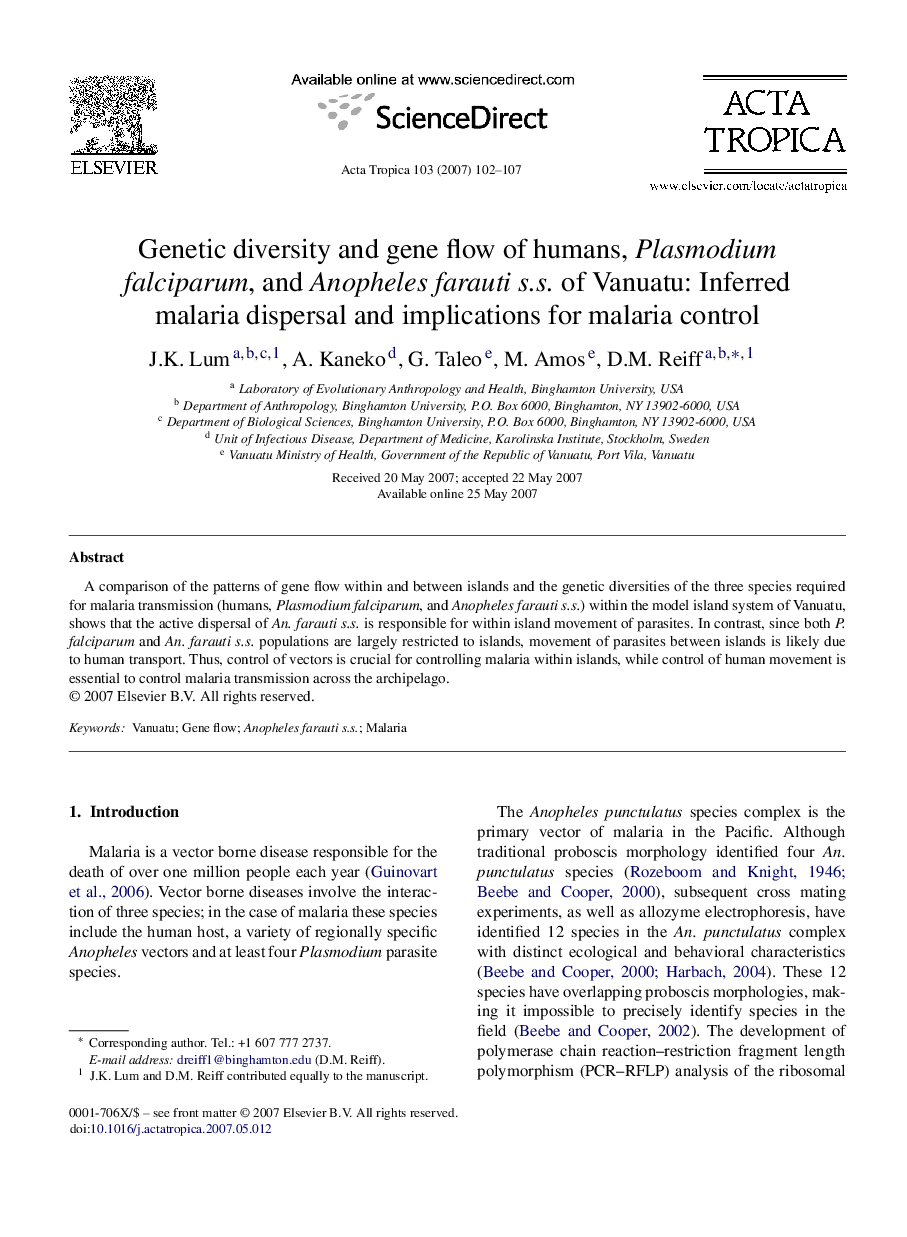| Article ID | Journal | Published Year | Pages | File Type |
|---|---|---|---|---|
| 6128456 | Acta Tropica | 2007 | 6 Pages |
Abstract
A comparison of the patterns of gene flow within and between islands and the genetic diversities of the three species required for malaria transmission (humans, Plasmodium falciparum, and Anopheles farauti s.s.) within the model island system of Vanuatu, shows that the active dispersal of An. farauti s.s. is responsible for within island movement of parasites. In contrast, since both P. falciparum and An. farauti s.s. populations are largely restricted to islands, movement of parasites between islands is likely due to human transport. Thus, control of vectors is crucial for controlling malaria within islands, while control of human movement is essential to control malaria transmission across the archipelago.
Related Topics
Life Sciences
Immunology and Microbiology
Parasitology
Authors
J.K. Lum, A. Kaneko, G. Taleo, M. Amos, D.M. Reiff,
